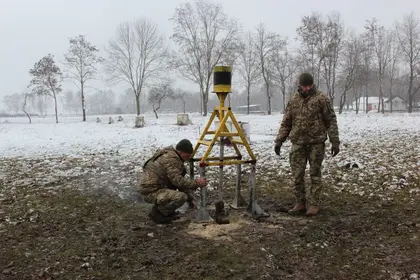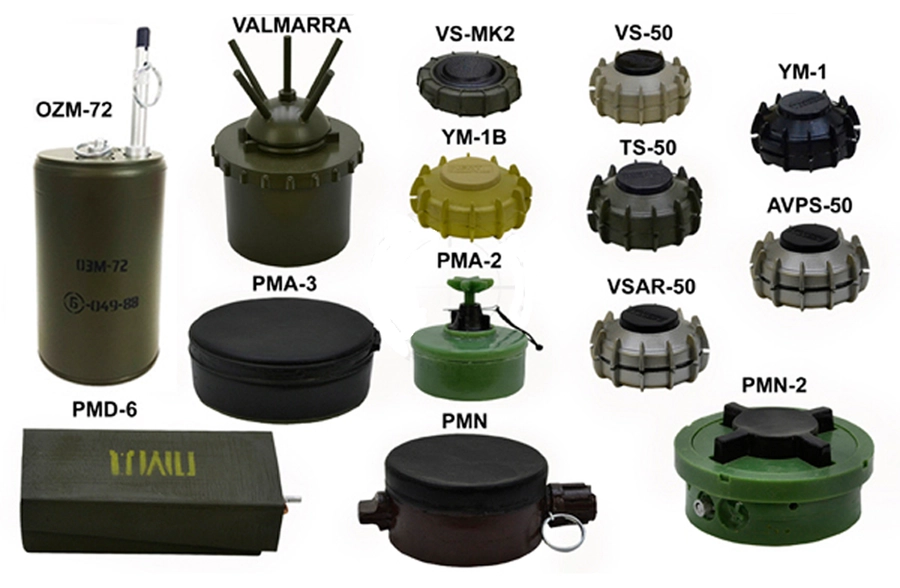What exactly are mine resistant boots?
Ukraine’s defense ministry announced on March 22 that the Central Directorate of Material Development and Support, together with the Force Support Command, have begun testing a boot aimed at preventing, or at least mitigating, foot and lower limb injuries for military engineers clearing landmines.
JOIN US ON TELEGRAM
Follow our coverage of the war on the @Kyivpost_official.
The boots will feature a multi-layer sole made from ballistic materials such as Kevlar, that will help divert the blast and retain the fragmentation from the detonation of an anti-personnel landmine.
In announcing the initiative, Vitaly Polovenko, deputy minister of defense, said: “The main task of such footwear is to preserve the [sapper’s] limb.”
He said: “Our specialists from the Central Administration study various samples of such shoes. They are working on improving tactical and technical characteristics. According to the results of positive tests and the approved reference sample, such mine-resistant footwear will be provided for the Armed Forces of Ukraine (AFU).
Why are the boots considered important?
The scale of landmine defenses laid by Russian forces is so extensive that the threat the AFU deminers face on offensive operations, as well as in clearing liberated territory, has highlighted the need for the best possible personal protective equipment (PPE).
Are these boots a new idea?
The concept of protective footwear for deminers is not new, but – unfortunately – the history associated with this type of PPE is not very encouraging. In fact, the search for a practical and effective solution to the requirement has so far defeated the military and humanitarian demining communities.

Biden’s Security Assistance to Ukraine Record – A Mixed Bag
In the January 2023 edition of the UN’s International Mine Action Standards section which covers personal protective equipment (IMAS 10.30), all reference to ballistic protective boots was completely removed.
Previous editions said: “...Organizations may consider providing blast resistant boots for the protection of feet and lower limbs where there is a significant risk that cannot be reduced by SOPs [Standard Operating Procedures] alone. However, [such] boots should be proven to be effective. The effectiveness and operational benefits of mine boots is still a contentious issue… the benefits are unproven. There is currently a danger that they offer a ‘false [sense of] security’.”
Are they practical and comfortable to wear?
The designs produced to date are based on two main concepts:
- The “spider” type, which was first fielded by the French military 30 years ago, usually consist of a four-legged frame that is strapped over the deminer’s combat boot designed to provide a stand-off between the deminer’s foot and the landmine. They are shaped and made from material intended to deflect a blast away from the foot and leg but can make the wearer unstable on rough ground.
- The other type features a sole made of several layers of protective material that adds several inches to the deminers height. These are made either as a permanent combat boot, or as an “over boot,” though they can be uncomfortable to wear and again can make the wearer unstable on rough ground.
Ballistic overboot Pneumatic overboot Spider overboot
Examples of mine resistant boots
Isn’t a deminer meant to stay behind the threat line?
That’s the idea. As such, some may see it as counterintuitive for a deminer, who has searched and cleared, to wear foot protection. During the clearance process, his or her feet should always be behind the threat line and any hazards should be cleared before their foot moves forward.
That makes it important to ensure the deminer remains on a stable footing.
What level of protection do the boots offer?
Most of the currently available boots may offer some protection against what deminers call “toe poppers,” such as the Russian PFM-1 (scatterable landmine), US M-14, Italian VS 50 or the Chinese Type 72. These contain relatively small amounts of explosives designed to injure, not kill – the theory being it’s harder to deal with a wounded soldier than a dead one.
Typical anti-personnel landmines
What does the evidence say? Are they effective?
Scientific evidence suggests that these types of boots may prove ineffective against the majority of anti-personnel landmines encountered in Ukraine, such as the Soviet/Russian PMN / PMN 2 or PMD-6, which contain relatively large amounts of explosive. It is also possible that the material of the boot could a make injury even more serious by adding additional contamination in the wound.
A 2004 NATO-sponsored study carried out by the Alliance’s Research and Technology Organization (RTO) carried out a scientific assessment of all demining PPE and was rather equivocal about the utility of protective boots.
The United States Army Institute of Surgical Research (USAISR) Lower Extremity Assessment Program (LEAP) study – which offers independent scientific evidence – suggests that it is almost impossible to offer protection against the size of mine that most deminers are likely to encounter in Ukraine.
So, what’s the conclusion?
During the course of the war in Ukraine the AFU has amply shown an ability to innovate and solve technical and operational problems that others have not. Time will therefore tell if Ukraine is able to come up with a boot that proves effective whereas so many others have failed.
You can also highlight the text and press Ctrl + Enter












